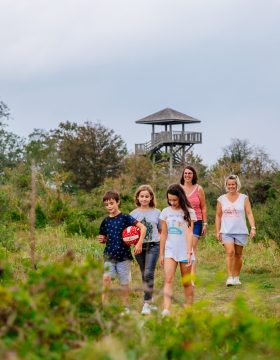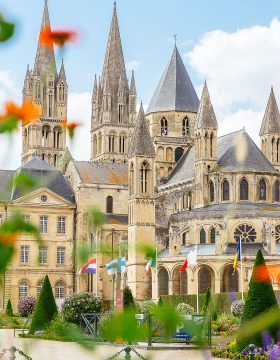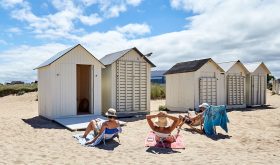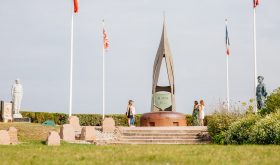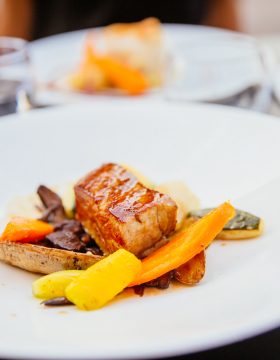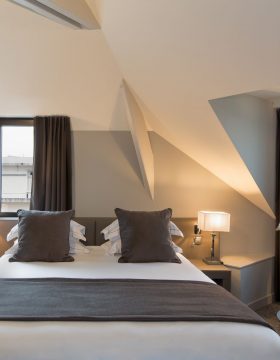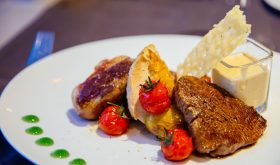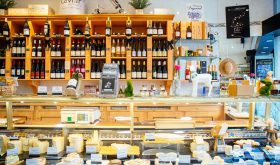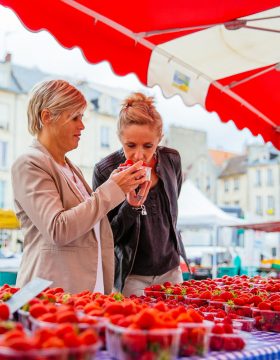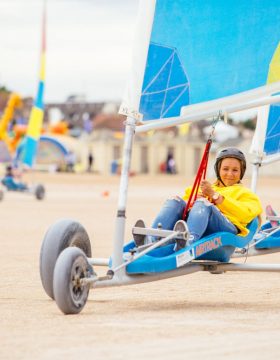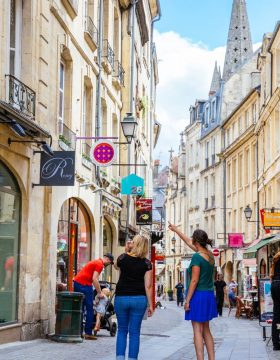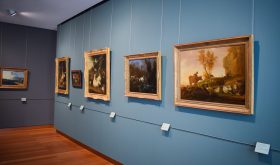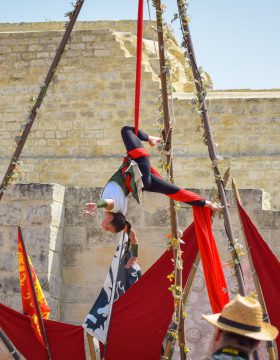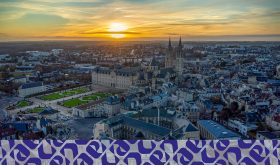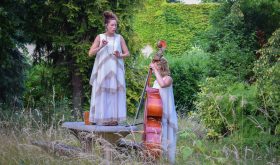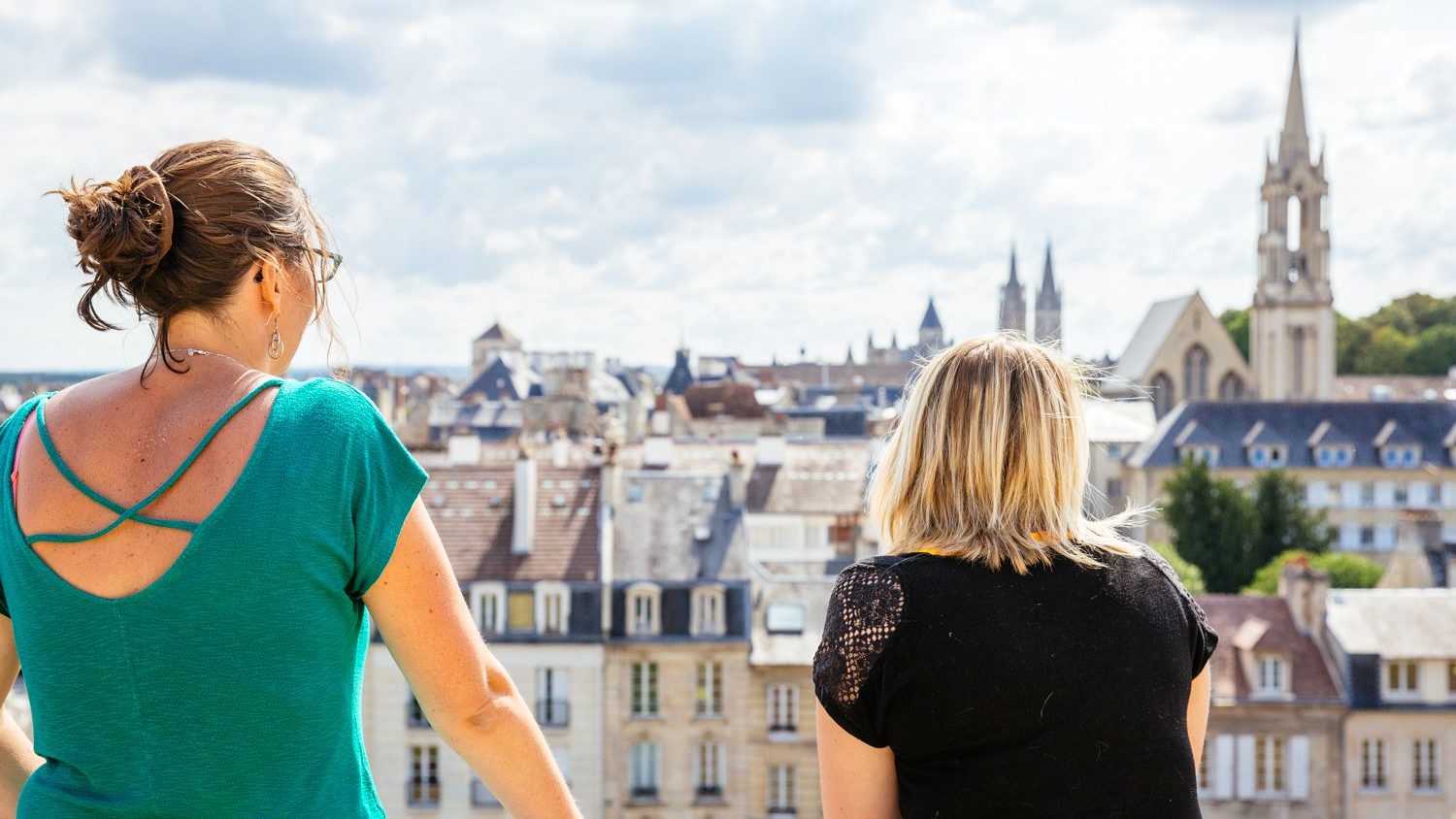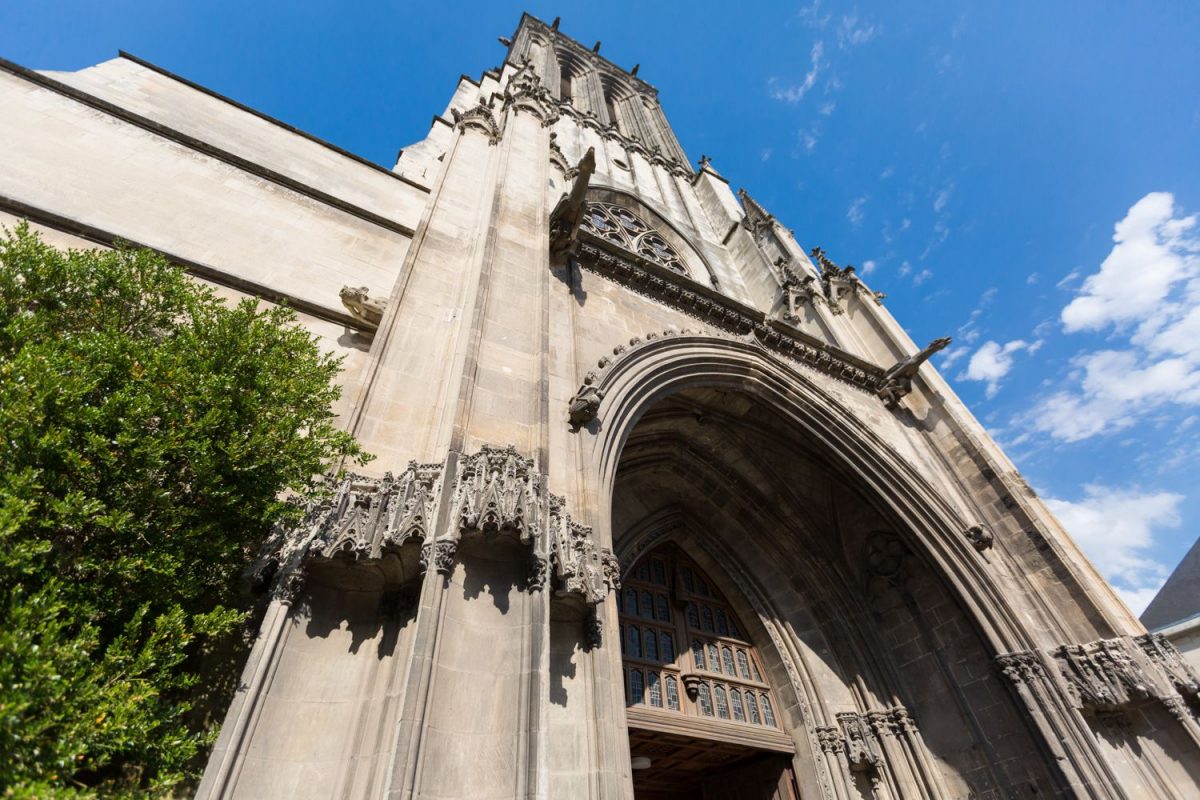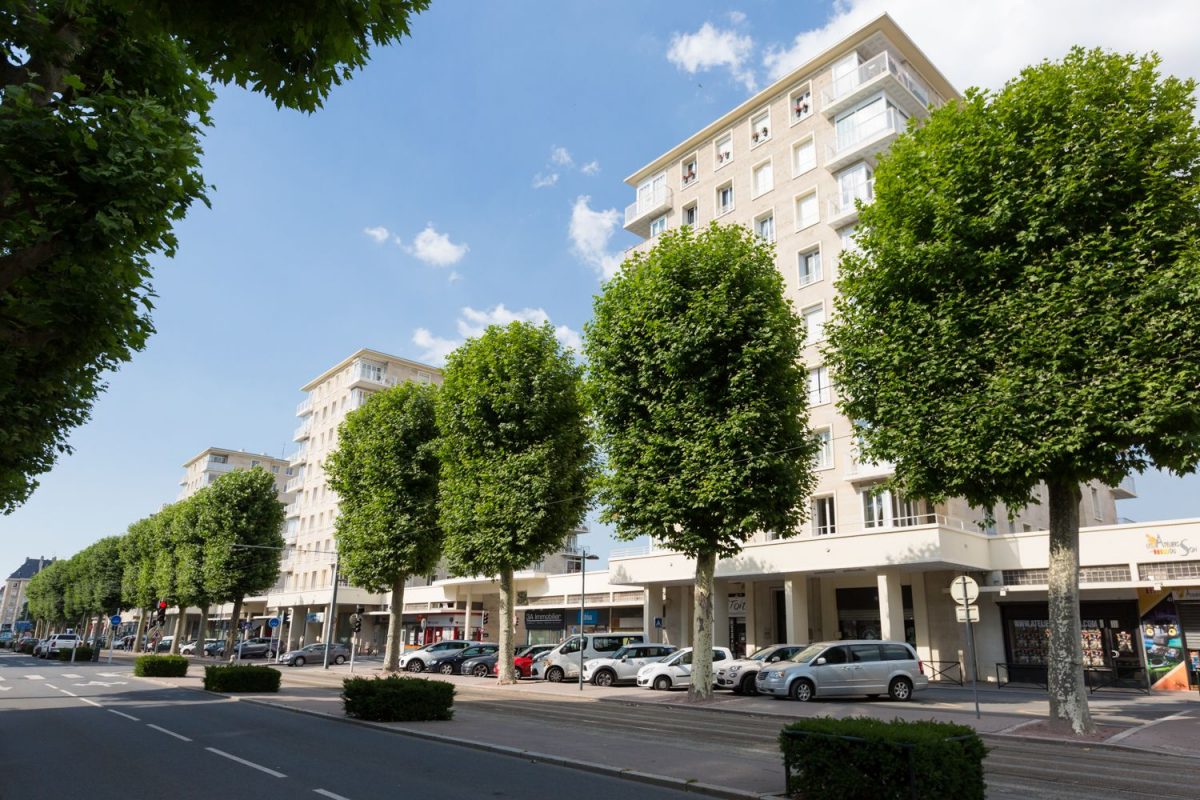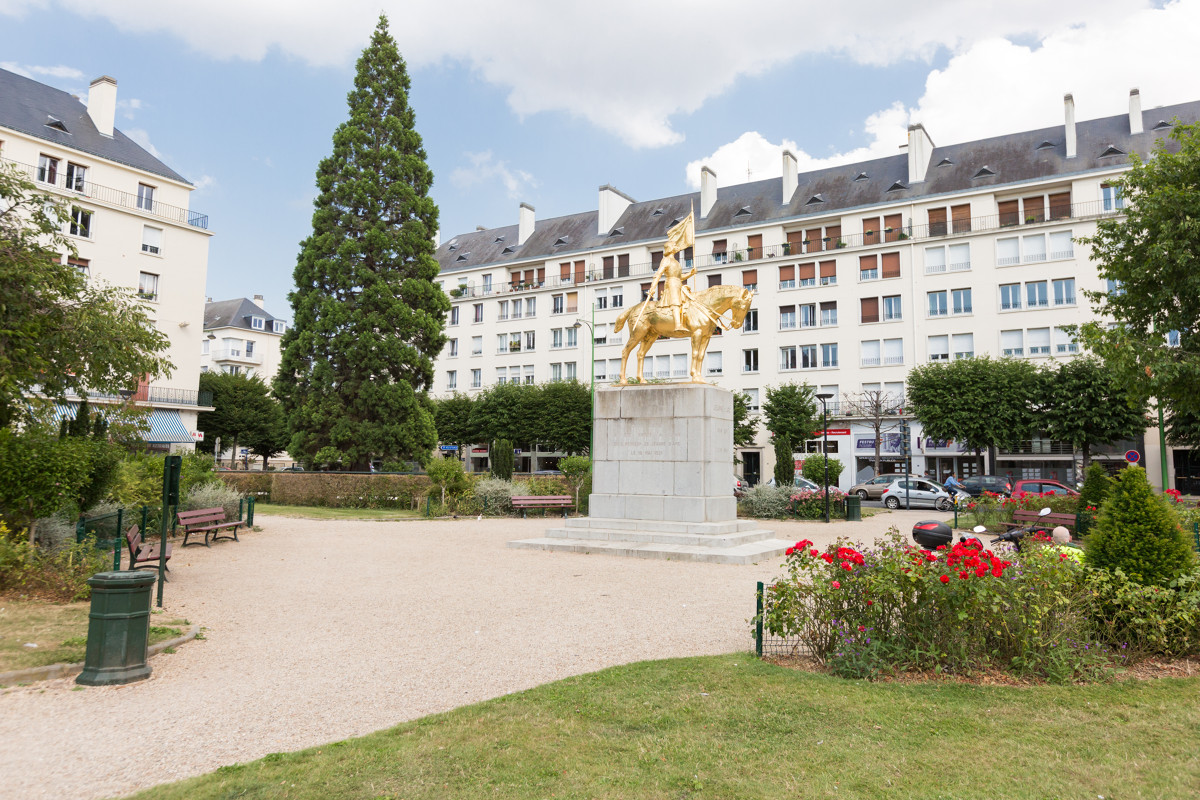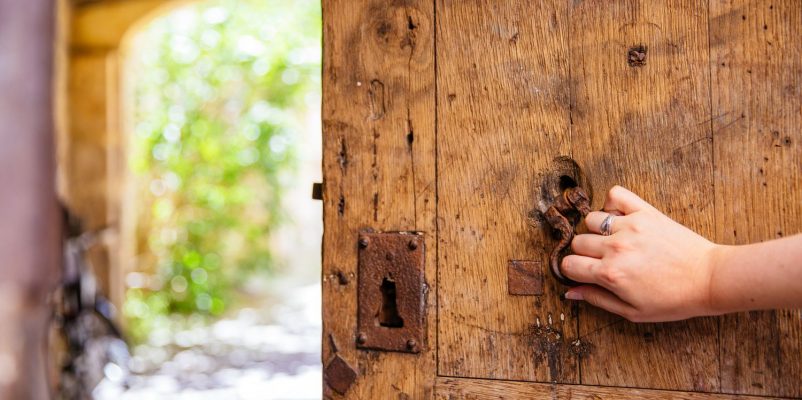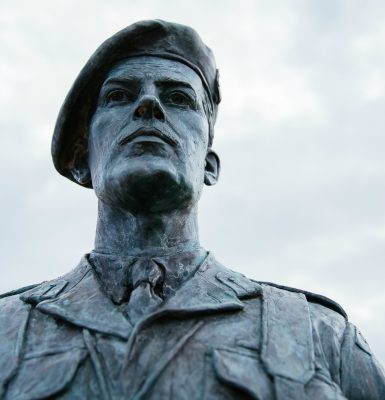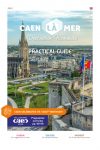The Liberation and wartime bombardments left many traces in Caen. But the city was successfully and harmoniously rebuilt. Come and see the most notable Reconstruction sites.
Completely reconstructed buildings
See you north of the Château de Caen, in the Jardin des Plantes district, at the University, one of the first buildings of the Reconstruction of Caen! It took over 9 years to rebuild the campus according to the architectural plans of Henry Bernard. Listed as a historic monument, the University of Caen attracts more than 30,000 students. The bronze statue of Louis Leygue has become the emblem of the city, it represents the phoenix rising from its ashes. Be sure to discover the 1 / 400th scale Plan of Rome on display at the Maison de la Recherche en Sciences Humaines.
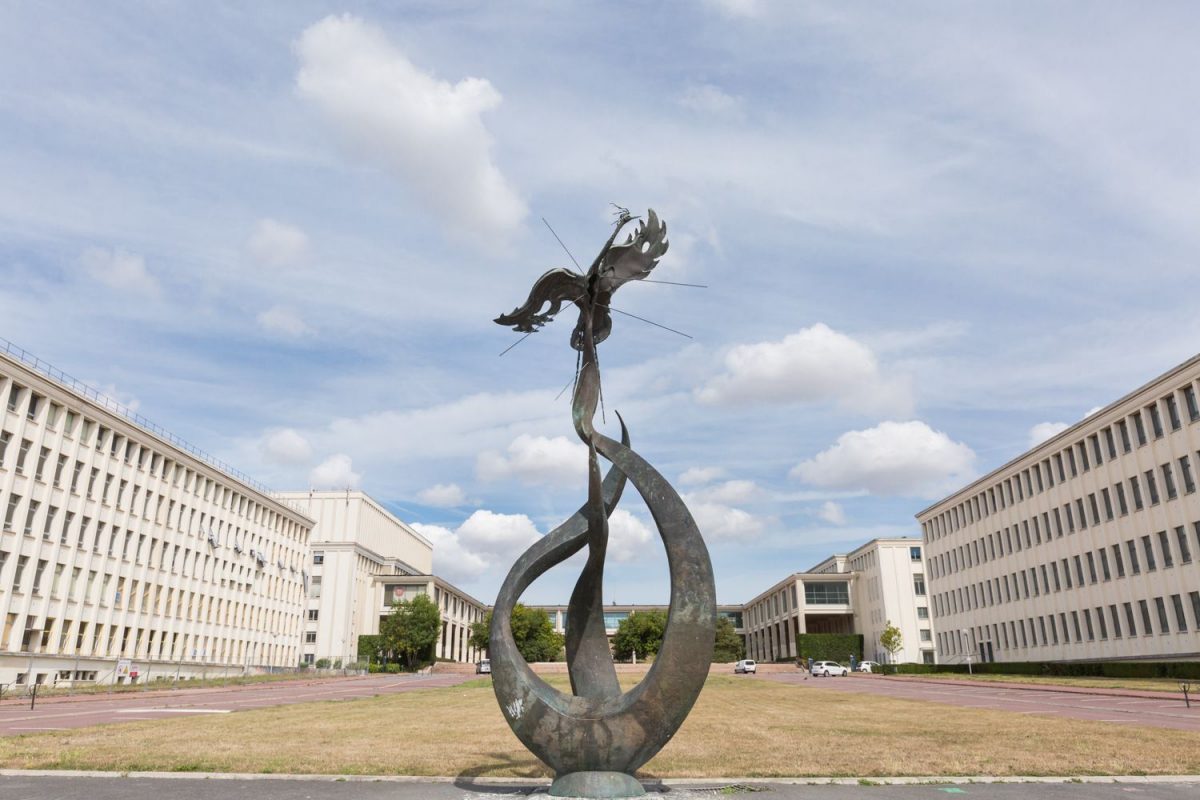
Direction Caen city center, Place Saint-Jean, where the Saint-Jean Church stands. Once there, take the time to observe it from the outside … The Church will certainly remind you of a famous Italian monument that is slightly tilted. It’s not for nothing that it’s nicknamed the Tower of Pisa in Caen! In 1944, the monument did not escape enemy attacks and during its reconstruction, concrete piles were added to stabilize the church, as well as the Pierre de Caen. Moreover, it was in the quarries of Pierre de Caen that many inhabitants took refuge during the bombardments.
Among the buildings affected by the bombardments, the Caen theater was the last that the city lost. It was only rebuilt in 1955 with a more modern architecture while retaining the spirit of “Italian theaters”, with its two semicircular balconies. In the spring of 1963, the theater hosted the National Reconstruction Congress.
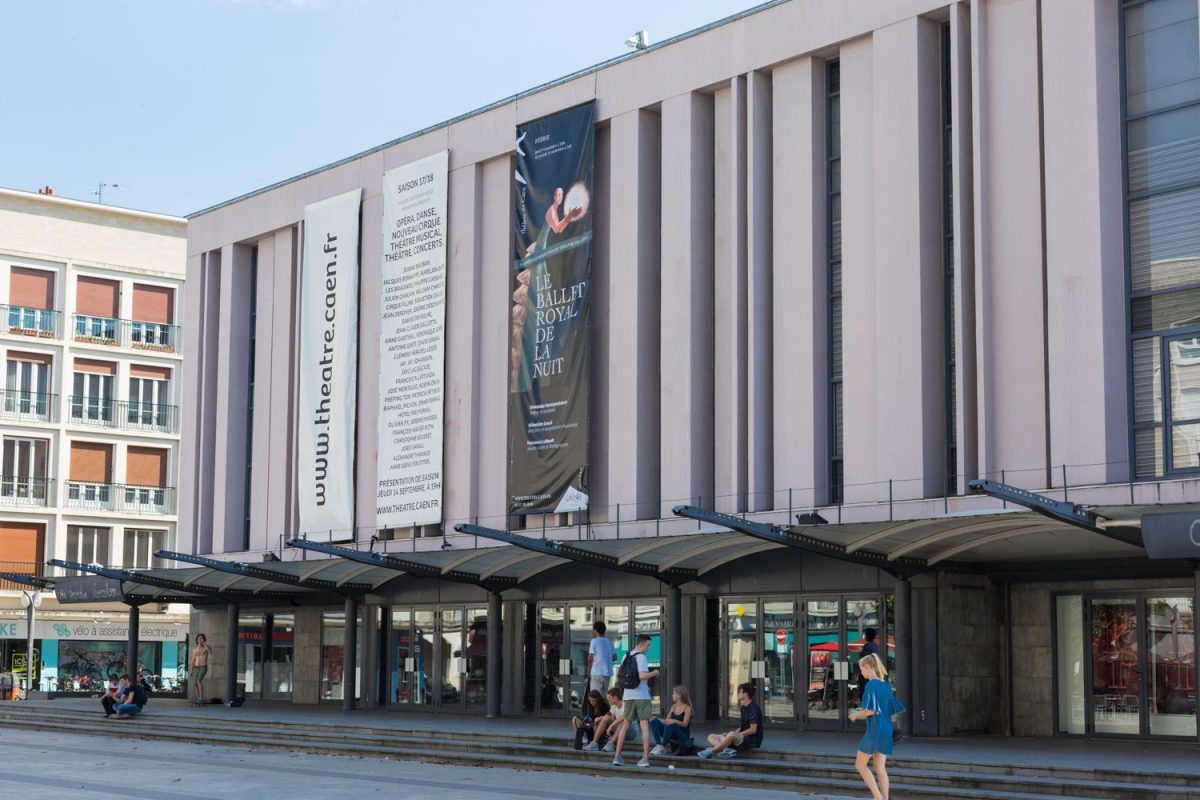
Districts keeping the past alive
A little way away from the city centre, you can enjoy a stroll in the little streets of the garden-city district, Nice Caennais. It was built in 1930 on the site of old nurseries for a wealthy population wanting to move away from the city centre. The district was originally surrounded by metal railings to create the impression of a large, safe garden. During the Occupation, it is said that the only civilian victim in Nice Caennais was a cat living at n°31 in one of the villas requisitioned by German officers. Today, you can visit the district, where the railings are no more. At the entrance, don’t miss the Villa Héliante, an Art Deco monument created in 1927 by a herbalist!

Avenue du 6 Juin is in the heart of the city of Caen. A true emblem of Reconstruction, it is aptly named. Built in addition to Rue Saint-Jean and make traffic easier, Avenue du 6 Juin connects the station to the University of Caen. In the middle of the avenue, stop at Place de la Resistance. The 6 Marine Tours in Pierre de Caen, were built between 1951 and 1953. 8 stories high, they pay homage to the Rue de la Marine, which had the same layout as the Avenue du 6 Juin. These towers with modern architecture and worked bas-reliefs herald the entrance to the path that leads to the Castle and to the Quatrans district.
Around Caen
Hérouville Saint-Clair
During the Reconstruction, in 1961, the French state decided to build a new, modern town to the north-east of Caen. The old village of Hérouville was then renamed Hérouville-Saint-Clair. It gave working people in Caen accommodation in a completely new town. The “commuter town” was divided into modern districts around a building with the Town Hall and shops: the Citadelle Douce. The metal water tower in Hérouville-Saint-Clair, which was built in 1968, was given the “20th Century Heritage Label” in 2007. The water tower is lit up at night and towers above Hérouville-Saint-Clair. It is a real symbol of the new town!
La SMN
Based in the towns of Colombelles and Giberville, the SMN (Société Métallurgique de Normandie) metal-working company was founded in 1912. It played a major role in the Reconstruction of Caen. After surviving the First and Second World Wars, the local metal industry underwent a real renaissance, creating many new jobs. The plant employed over 6000 people, some of whom lived in a company town located on “The Plateau” near the factory. Guided visits are organised by members of the SNM Memory and Heritage association to see the electricity workshop, the duty desks and the cold room, and to share the history of this remarkable example of a company town.

